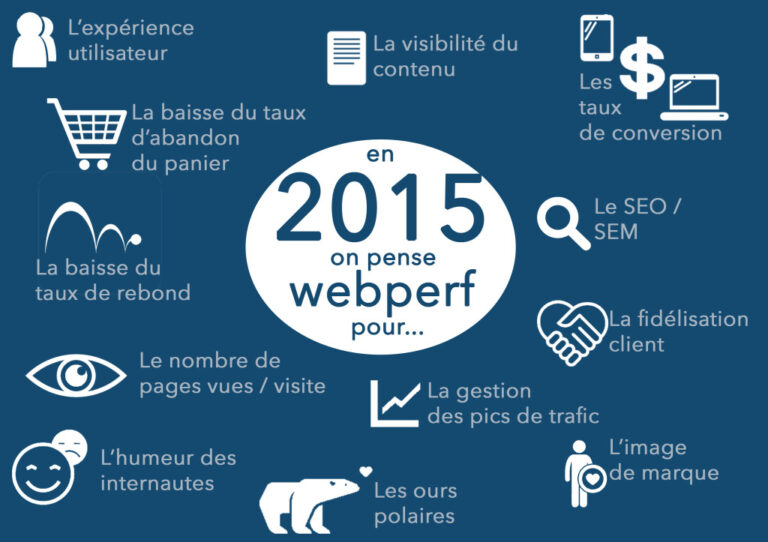The start of a new year brings with it new projects and new resolutions.
So to combine the two, here are 15 good reasons to apply Webperf best practices to your sites!
1. You improve the user experience
It’s no secret… nobody likes to wait. In fact, by speeding up your website, you’ll considerably improve the user experience. Say goodbye to web pages that take too long to display.
2. Your important content is visible more quickly
When we think webperf, we also think about displaying important content as quickly as possible. As a result, Internet users have faster access to it, and are able to interact with your site as soon as possible.
3. Increase your conversion rate on desktop
Several studies have shown that the conversion rate of an e-commerce site is (notably) correlated with its speed.
Everyone’s talking about Amazon’s famous +100 ms, which cost the company 1% of its turnover.
On a smaller scale, we’ve seen our customers’ conversion rates increase by up to +24.58%!
4. Increase your conversion rate on mobile

Loading speed is the top quality sought by mobile users (41%) [1], and 74% of them would abandon their mobile browsing on a site that took more than 5 seconds to display [2].
5. Reduce your bounce rate
-7% reduction in bounce rate thanks to a fast site [3].
In particular, we avoid losing users who choose to leave the site because it’s too slow.
6. Your rate of page views per visit increases
+1 second loading time = -11% page views [4].
7. You reduce cart abandonment rates
Shopping cart abandonment rates average 65.23% on e-commerce sites [5]. Even after reaching the checkout page, between 16 and 30% of Internet users do not finalize their purchases. [6]
11% of those surveyed explained these high abandonment rates by the lack of website speed [5].
8. You contribute to customer loyalty
After waiting 3 seconds, 57% of Internet users leave a site, and 80% of them will never return (Voucher Cloud study on consumer psychology). 85% would not recommend a site to friends and family, even if it meant damaging the brand’s reputation in the process. [7]
9. You contribute to improving your free referencing

Moz ‘s article published in September 2013, shows that server response time has an impact on SEO.
10. You contribute to the improvement of your paid referencing
Website speed is one of the criteria for a good Quality Score….
Quality Score is a major element in paid search and has a direct impact on the cost per click of the ad.
11. Better management of traffic peaks
When you speed up your site, you reduce the number of requests and their weight. As a result, your server is less stressed and can better handle your traffic peaks.
12. Reduce your bandwidth costs
Fewer requests = lower bandwidth costs.
13. You contribute to your company’s image and inspire confidence
Your website is your company’s showcase. The speed of your site is therefore a determining factor in the image Internet users will have of your company. The better your site performs, the more Internet users will have confidence in you.
14. You improve French people’s mood
The average French person spends 120 hours waiting in front of their computer (for it to switch on or for web pages to load). According to Scan Disk’s infographic , this waiting time is the cause of mood swings in the French.
15. You save the lives of polar bears
(yes, yes!)
And last but not least: fewer requests = less energy. In a way, you’re doing your bit for the environment!
Decipher the challenges of webperf for conversions, UX and SEO:
Source :
[1] Based on a study conducted by Netbiscuits.
[2] Based on a study conducted by Mobilosoft in May 2012.
[3] Figures from a Fasterize case study – sector: tourism – period: between August and October 2012.
[4] Figures from a Fasterize customer case study – sector: media sales – improvement: average loading time reduced by 17% – period: between April and May 2014
[5] According to the article “[E-commerce] Analyse les abandons de panier pour améliorer le taux de conversion” by Polynet
[6] According to the Infographic: “What you need to know about online payment in France” by JDN
[7] According to a CDNetworks survey





















